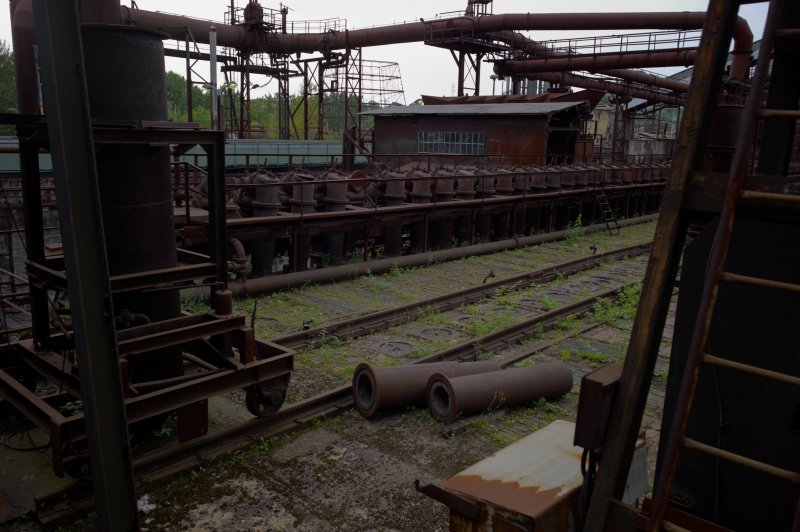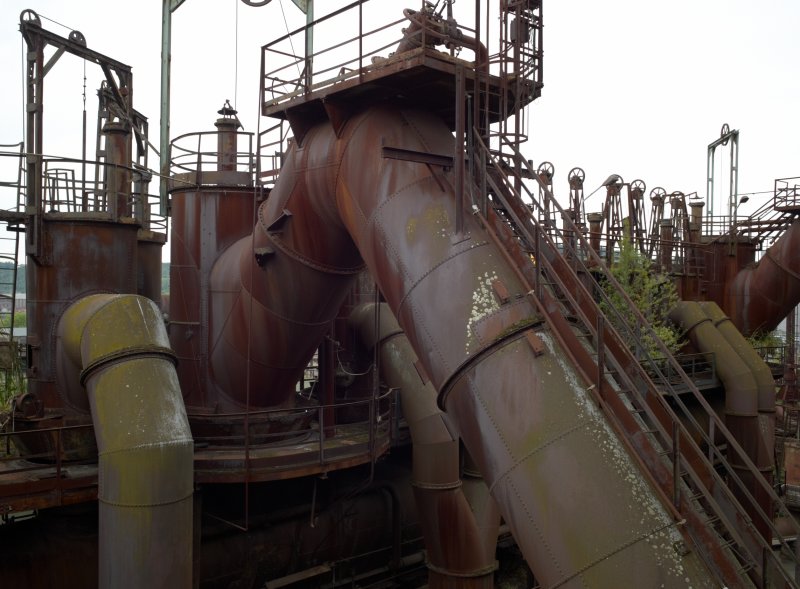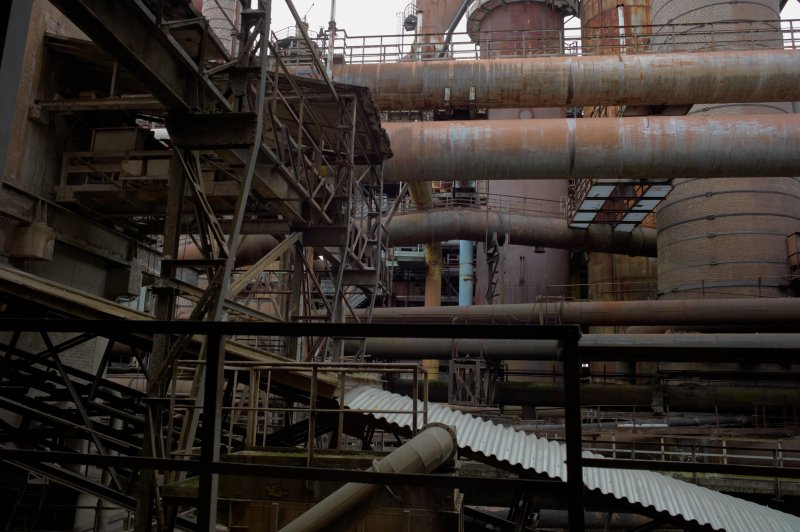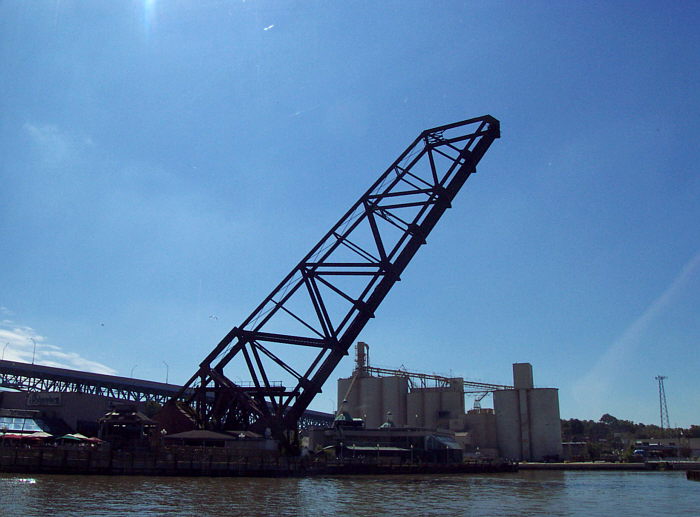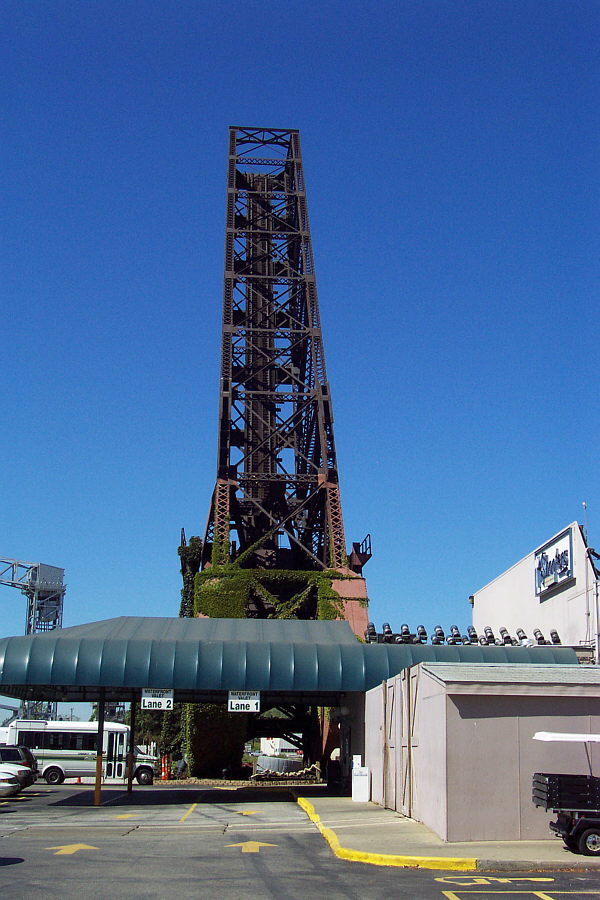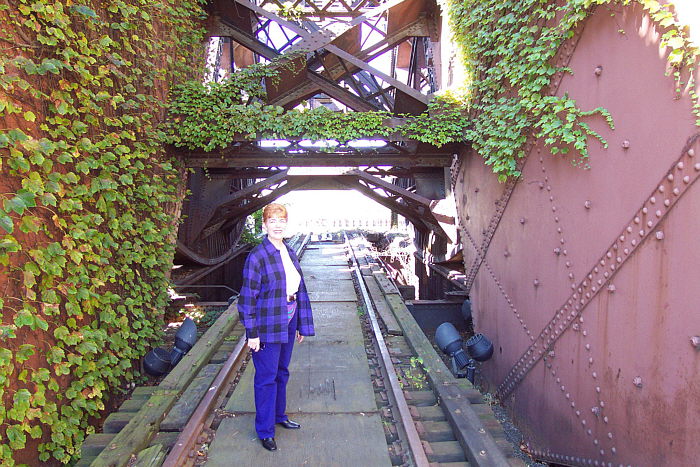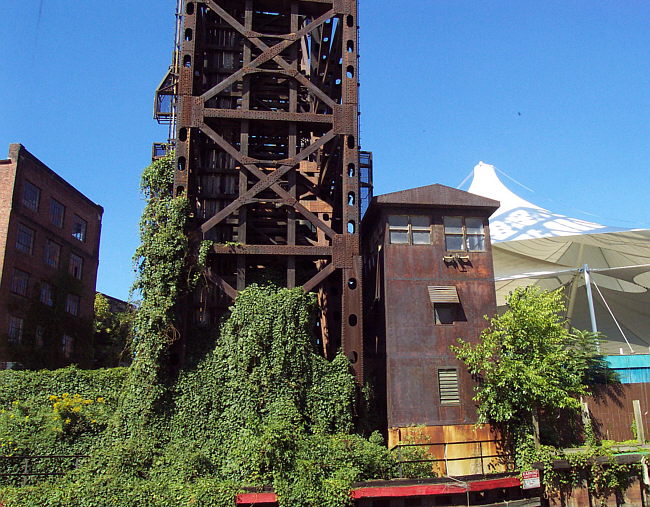The Cuyahoga River was the lifeblood of industrial Cleveland. It was crossed by several major thoroughfares (over high-level bridges, in "modern" times) and numerous railroad lines. In the industrial area near the mouth of the Cuyahoga (where it enters Lake Erie), called The Flats, there is a fantastic collection of almost every kind of movable bridge imaginable.
When I was perhaps 10 years old or so, a favorite pastime on a Friday or Saturday night was for my parents to drive with me to an area alongside the river, between two of the bridges. (Near the Coast Guard Station, for you Cleveland guys.) There we would watch the various vessels (ore carriers and the like) traverse the river, while the bridges opened and closed. (Was I fortunate to have parents who would do this for me or what!) These vessels, by the way, regardless of their size (and some are truly enormous) are all "boats" - not ever "ships".
Especially for the shorter spans (often across branches of the river), some of the railroad bridges were of the
bascule type, meaning that they pivoted up at one end, generally with large circular members at the end rocking on flat foundation plates, the bridge being forced to hold the proper position by teeth on the circular member engaging teeth on the foundation plates.
In 2003, Carla and I went to Cleveland to attend the 50th reunion of my high school class (Lakewood High School, in a suburb just west of Cleveland).
We took a boat trip along the river, and also dined in several fine restaurants that have been built as part of the renovation of The Flats as an entertainment district.
Here, for reference, we see a typical bascule bridge in the open position. I think this one was no longer in use at the time:
Douglas A. Kerr:
Cleveland, 2003 - Bascule bridge K10477
This was right near the area where my parents and I used to park and watch the river traffic.
Near one of the new restaurants stands another definitely-unused bascule bridge (the railway route it served has been paved over).
Douglas A. Kerr:
Cleveland, 2003 - Bascule bridge K10624
The restaurant in fact uses the bridge as a landmark, and it is illuminated at night.
Here we see Carla in the mouth of this bridge (you can see some of the lights):
Douglas A. Kerr:
Cleveland, 2003 - Bascule bridge K10626
Just to our left of Carla's right shoulder, we see one of the "rockers".
The panels to the right and left (with the many rivets) are large counterweights, attached to the pivot end of the bridge span. They drop into wells on each side of the bridge approach when the span is open. (In some of these bridges, the counterweights run across the full width of the bridge and then some, are not so high, and with the span open, sit on the approach.)
A little further up the river is another (obviously-unused) bascule bridge. From this shot, I'm not able to figure out exactly how its articulation is made.
Douglas A. Kerr:
Cleveland, 2003 - Bascule bridge K10480
To the right, we see a modern structure - part of the revival of The Flats (I forget now just what it is).
Best regards,
Doug
